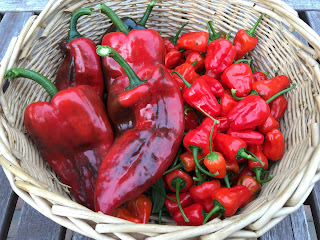The End

There is a season for everything in the garden, and that is also true for this blog. Fall is settling in now, and as days shorten and cooler air settles in, it’s typically a time we put things to bed for winter. I’ve been writing this blog for over seven and a half years, and in that time we have built a pretty amazing garden for food, flowers, and all the creatures that call it home. We’ve had plenty of successes and failures, and we’ll continue to enjoy it each year. But nothing lasts forever, and even the most fruitful plants go dormant after a time. Now that I am writing full time for a career, writing for fun isn’t that appealing any more. And honestly, I think that I’ve shared just about all I’ve got in the way of advice, experiments and innovations. The garden will still be here of course, and we’ll be in enjoying it in a variety of ways — just not publicly. Likewise, the blog will still be here as a reference, gathering dust on the shelf of the internet. Thanks for...





